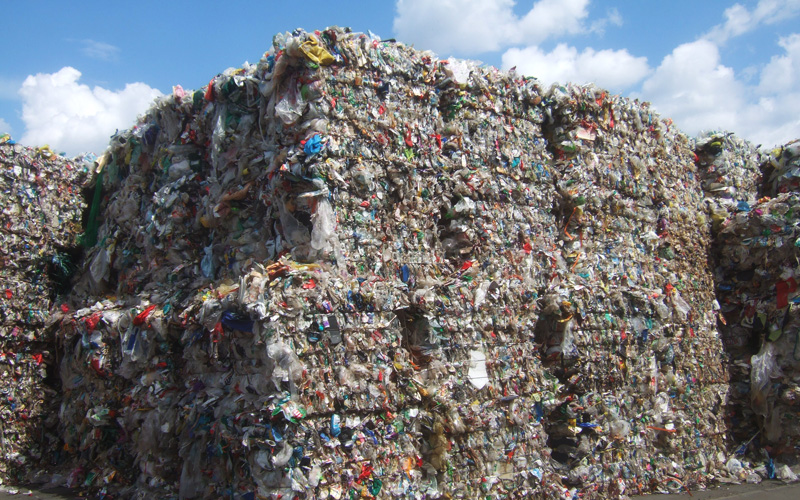This has greatly improved living standards. But as more of these materials are removed from the ground, a proportionate amount of waste is created.
Despite household and industry efforts to decrease waste production and concentrate on re-use, the US recycles less than 25% of its waste. There are many reasons for this. In some cases the costs are prohibitive.
For example, efforts to recover cobalt, lithium, and nickel by dismantling used EV batteries are still a “money-losing endeavor” Bloomberg reports. In China the government is incentivizing the process.
EV sales are expected to soar, massive “money-printing” by governments is underway, and the World Bank anticipates that 3.5 billion tons of waste will be produced annually by 2050. Against this backdrop, it’s no wonder that Goldman Sachs has predicted a bull market for metals. Even amateur day traders are buying metals and stocks of waste management and recycling companies.
The US Environmental Protection Agency (EPA) has a plan to double the recycling rate over the next decade. Below we’ll look at why this is necessary and how the EPA plans to accomplish this.
Not enough waste is recycled throughout the US
In 1960, Americans were responsible for an average of 2.7 pounds of waste per day. This number grew to an average of 4.5 pounds by 2017, almost doubling the amount in less than 60 years.
We would be a long way toward sustainability if we could recycle half of their waste and put it to good use. That isn’t the case. And there isn’t a single reason that so little of our waste is recycled. The causes span everything from collection problems to individual misinformation.
Theoretically, everything can be recycled and transformed. But governments have specific criteria for what materials are suitable for salvaging and re-shaping. And there are economic considerations.
Why does China reject recyclable waste?
For a long time, China was the biggest importer of waste products — not just from the US but from the world. This became a problem starting 2017 when China greatly limited the waste they would import with the long-term goal to eliminate waste imports completely.
There are many aspects of this. Some kinds of wastes (e.g., plastics) are not being imported at all. More important, acceptable contamination levels in waste they will take are much lower. The additional disposal processes necessary cost money to plan and execute.
As a result, the EPA’s strategy to reform the recycling system in the US is critically important.
The EPA’s strategy to reach a 50% recycling rate by 2030
As per the US National Recycling Goal released in 2020, the EPA describes three key measures in focus that may prove successful in recycling over half of the country’s waste within the next 9 years.
These key measures are:
- Reducing the contamination rate of recyclable materials
- Improving the efficiency of existing and novel recycling processes
- Creating novel markets for recycled products and improving existing ones.
Reducing the contamination rate of recyclable materials
Wish-cycling is the problem of people recycling non-recyclable materials. As discussed recently, it is a major problem that local recyclers are still struggling with. Lowering recycling contamination makes the process easier and more economically viable.
The EPA’s strategy involves measuring the amount of contaminants present in recycled materials. This will allow them to track progress and create new benchmarks in hopes of meeting the 2030 target.
Improving the Efficiency of Recycling Processes
The EPA’s second measure involves directing efforts into improving existing recycling systems. At present, the US recycling system is split into three broad steps:
- Collecting
- Processing
- Remanufacturing.
According to the EPA, the aim is to allocate funds towards new equipment that will help improve the efficiency of each of these steps. With these goals in mind, the EPA plans to execute the National Recycling Strategy. This will allow the US to have a more fluid recycling system where the three steps are more closely integrated, increasing the overall output of usable, recycled products.
Creating and Improving Markets for Recycled Products
Growing awareness of climate change and other environmental problems naturally increases demand for recycled consumer products. But if other efforts to improve recycling work, the supply of recycled products could outstrip the demand.
To prepare for a new influx of recycled material, the creation of new recycled and eco-friendly markets is key. The EPA plans to invest resources in broadening existing markets as well as working with hitherto environmentally destructive industries to incorporate new materials into their production processes.
The current state of recycling in the US provides a lot of opportunities for improvement. But it isn’t a simple task. We need to improve our recycling inputs, processing, and demand for final products. The EPA’s National Recycling Goal provides a blueprint for doing just that.











[…] Recycling Magazine: How the EPA plans to double the US recycling rate by 2030 […]